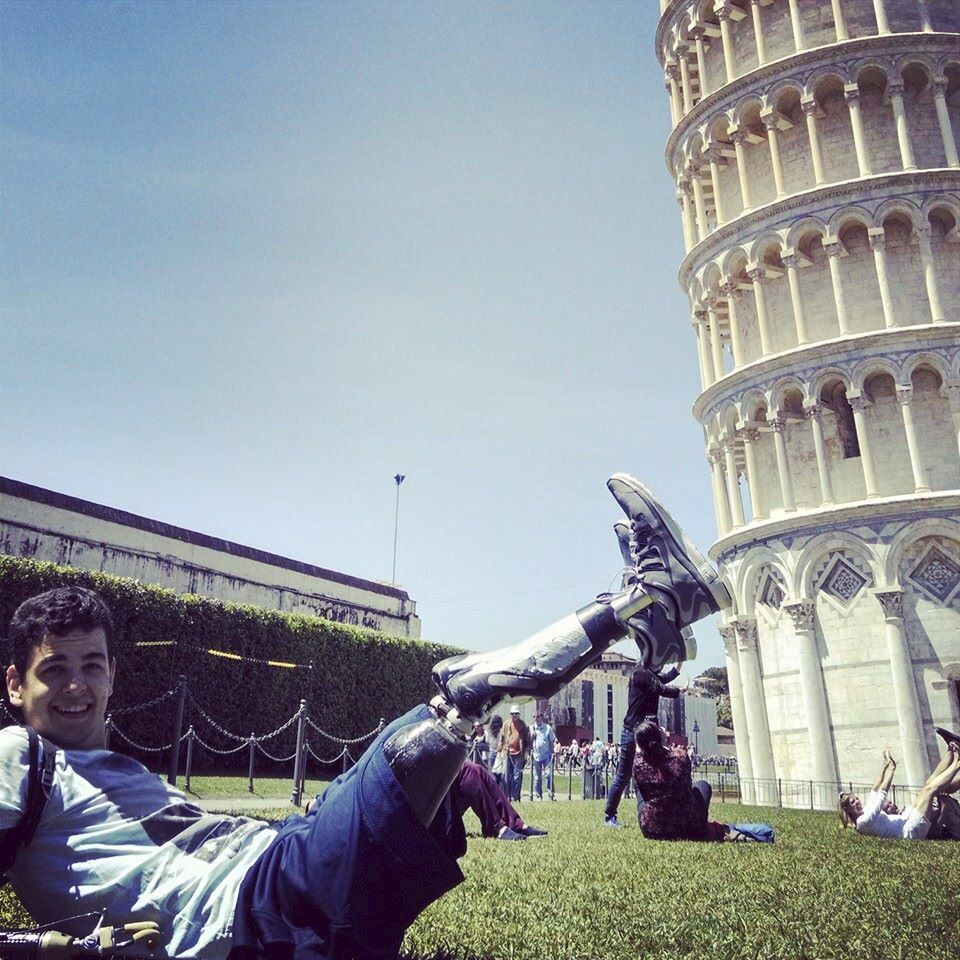5 Tips for Traveling with Prosthetic Devices

The best way to help ensure travel without issue is to plan ahead. Allow extra time, know your rights, and ask for assistance if you need it.
From a young age, I dreamt of traveling the world, meeting different people, eating exotic food, and experiencing life in a way I hadn’t before. I worried that would change when I lost parts of all four of my limbs at the age of 18, but with tremendous effort, amazing support from loved ones, and the expertise of a team of prosthetists, physical therapists, and occupational therapists, I was able to get back on my feet and regain my independence. It has been a long, arduous journey, and I’ve had my ups and downs; however, giving up has never been an option. One by one, I managed to tackle each daily life skill that allows me to live by myself in an apartment in Florida, drive my own vehicle with no hand controls, and travel the world as a public speaker, a mentor to other amputees and, of course, a tourist.

Taking trips by myself almost weekly as a quadrilateral amputee required learning some life hacks, and I’d like to share a few of them with you*:
- Get to the airport with plenty of time to spare.
The Transportation Security Administration (TSA) can be very picky with their screening process, and it’s better to get to your gate with extra time than to miss your flight due to security delays. For airports I know, I usually arrive a full two hours before my flight. If that airport is larger or busier, I might choose to arrive 3 hours in advance.
Expect that you might set off security monitors, and wear comfortable, loose clothing and slip-on shoes so it’s easy to show your devices when requested.
For more details about airport security and medical devices, check with the TSA.
- Pick your connections wisely.
As a bilateral above-knee amputee, I expend a lot of energy just walking, and airports can be very exhausting, even for fit, able-bodied people. So, as you travel, keep a running list of the best and the worst airports in which to connect, and if you, unfortunately, have to stop at one of the bad ones, ensure you have enough of a layover to get where you need to go without having to get there exhausted from the rush.
Remember that you can request a wheelchair or golf cart escort, too.
- Bring spare parts with you, especially because medical devices travel for free.
If an airline ever wants to charge extra for a bag that contains prosthetic parts or supplies, just let them know that the bag contains medical devices; the bag should go free of charge. Do note that this only applies to bags that contain only medical devices, but some airlines are more strict than others on this rule.
Being prepared and proactive regarding potential issues you may run into with your prosthesis might save you some headache. Bring screwdrivers, spare screws, and any other items you frequently need to keep your devices working. They won’t add much weight to your luggage and will allow you to travel with peace of mind.
- Consider alternate forms of transportation.
Flying with prosthetic devices doesn’t have to be stressful, but sometimes travel by train or by bus is preferrable. There are even travel agencies that specialize in accessible travel, like Access Anything and Easy Access Travel.
- Be mindful of hygiene.
Travel exposes you to more people and places than your everyday life. Make sure you bring whatever you need in order to keep your prosthesis and your skin clean and disinfected. Chlorine wipes, rubbing alcohol, and skin ointments are a must in a prosthetic user’s travel bag!
*These tips are informed suggestions from a traveler with prosthetic devices, and should not substitute for advice from your medical team.
Advice from a Community of Your Peers
Join AMPOWER’s password-protected online community for more tips like these.
Latest Updates
Subscribe to stay up-to-date on our latest posts.


